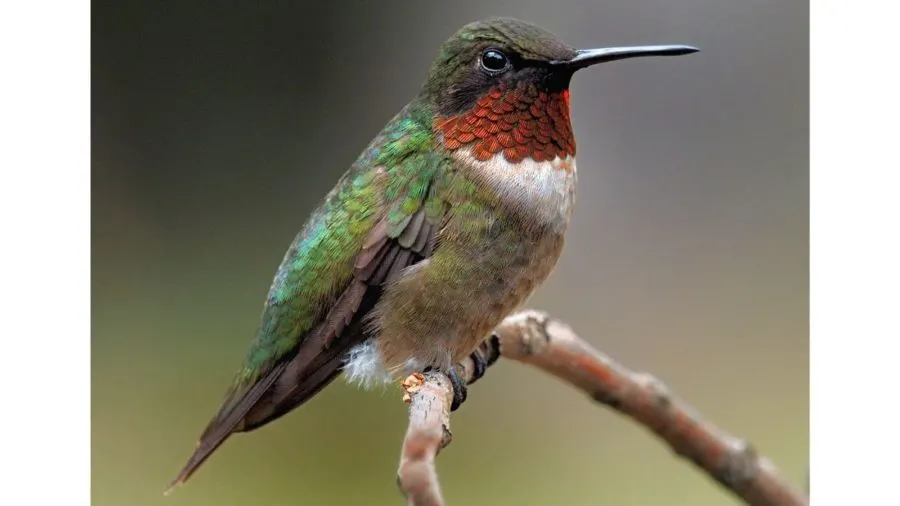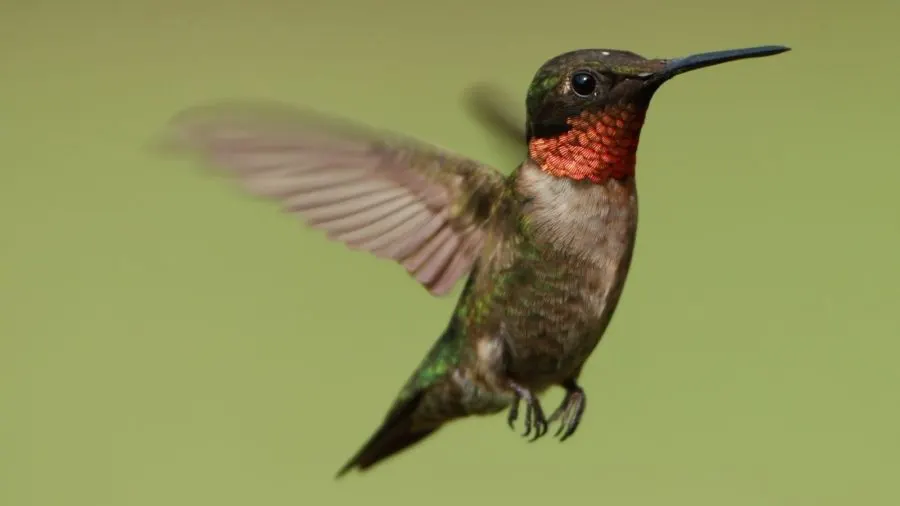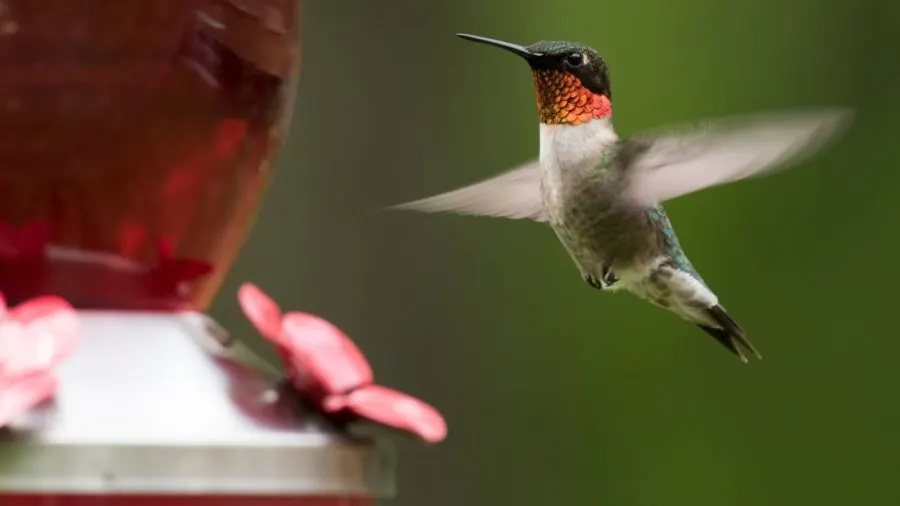In a state where bigger is considered better, it is surprising that the world’s smallest birds cause such a stir. Every September, hundreds of birders flock to Rockport, Texas to see thousands of migrating hummingbirds and other migrating species highlighted at the annual HummerBird Celebration.

These tiny travelers use this coastal community as a filling station, a place to refuel, before they begin their arduous, nonstop journey across the Gulf of Mexico to the warmer climes of Mexico and Central and South America.
The Rockport-Fulton area has long been considered a birders paradise and is best known for Aransas National Wildlife Refuge, the wintering grounds of the Whooping Crane. Many birders migrate here during the fall and winter, attracted by the warm Gulf weather and the more than 500 species of birds that they can add to their life lists.
Connie Hagar, an amateur omithologist and a legend in this coastal village, focused the eyes (and binoculars) of the bird watching community on the Coastal Bend. She moved to Rockport in 1935 and chronicled hundreds of species for three and a half decades.
Table of Contents
How Did the Hummingbird Festival Get Started?

Jesse Grantham, former director of the Audubon sanctuaries in Texas, read Connie Hagar’s biography, which also recounted the huge hummingbird migrations through the area during the 1930s and 1940s. Along with fellow birders Dan and Betty Baker, Grantham went in search of the migrating hummers and was inspired with an idea for a hummingbird festival, which would help both residents and visitors learn to attract, feed, identify and understand these tiny travelers.
“It is a spectacular natural phenomenon you really should see and witness,” said Grantham, who also guided bus tours during early festivals.
Birds have an opportunity to attend workshops and programs presented by experts in the field, authoritative speakers who will discuss bird photography, hummingbird identification, birds of the Texas coast and other topics on hummingbirds and bird watching.
Which Hummingbirds Are Found in Rockport, Texas?
Rockport is a hummingbird hot spot. Located on the southern end of the Central Flyway–a bird highway which brings migrators from Canada, through Montana, and over the Central states on their way to Mexico. It also attracts a few strays from the Mississippi Flyway).
Rockport boasts five hummingbird species: Ruby-throated. Rufous, Broad-tailed, Black-chinned, and Buff-bellied. In addition, you may even spot a Costa’s or Anna’s hummingbird, if you are lucky.
The most commonly seen hummingbird in Texas, and the only one found nesting east of the Mississippi is the Ruby-throated hummingbird. Distinguished by the male’s red throat and metallic green head, this three-and-one-half-inch-long bird can be seen at most feeders in the Rockport area.
In fact, you will probably see five Ruby-throats for every one Rufous Hummingbird. Rufous males have a reddish plumage with an iridescent red throat gorges. They nest in the Pacific Northwest. The Black-chinned Hummingbird migrates from the western states, and the males have a black chin and an adjoining purple metallic throat.
A mountain inhabitant, the Broad tailed Hummingbird is similar to the Ruby-throats, but can be distinguished by the male’s broader gorget or throat patch and the shrill whistling sound made by its wings during its late-summer molt.
The rare Buff-bellied Hummingbird can be identified by its bright orange bill and extensive emerald coloration.
You will have the chance to see all of these species on the Audubon guided bus tours. With stops at private homes, including one where the residents record the annual return of a Buff bellied Hummingbird, you may see awe-inspiring swarms of 150 to 200 hummers in a virtual feeding frenzy.
Although the HummerBird Celebration recognizes all of Rockport’s feathered friends, it is the tiny hummer that steals the show. In recent years, the city has made a concerted effort to encourage residents to attract hummingbirds by sponsoring workshops and classes.
Attracting Hummingbirds is a Community Effort

As a result, citizen have planted bushes and vines to attract the migrators to their backyard habitats. Workshops during recent seminars have covered selecting plants to attract hummingbirds to your yard.
Because hummingbirds are found only in the New World, Texans will want to stick to plants native to these areas and avoid imported exotics. Plants from Asia and Africa have not evolved with hummingbirds as their pollinators, so they do not have nectar receptacles.
There are over 300 species of hummers on record, but they are found only the the New World: the Americas and the Caribbean. An amazing 160 species of hummingbirds live in the jungles of Ecuador, but the variety diminishes greatly when you travel even 10 degrees from the Equator. In all, 13 species nest in the United States.
Rockport residents have sought native plants, such as Turk’s Cap, which are attractive to the hummers and thrive in the area’s climate. You will also see trumpet vine, honeysuckle, salvia, impatiens and coral bean in many Rockport yards. These flowering plants are perfect for the hummingbird’s long, narrow beak.
In addition to planting and maintaining hummingbird gardens, residents along the Coastal Bend also have taken on the Herculean task of maintaining liquid feeders. Many homes have a dozen feeders. Although hummingbirds are generally very territorial and may defend a feeder from all other hummers, during migration the sheer number of birds prevent any one hummingbird from taking over a feeder or feeding station. The birds are in such a constant feeding frenzy that it is not uncommon for the feeders to replenishing every few hours.
You will hear discussions about the optimum mixture of sugar and water in a feeder, but a solution of four parts water to one part sugar is suggested. More sugar is not better, more is worse, warned Esther Tyrrell, co-author with her husband Robert, the world’s top hummingbird photographer, of Hummingbirds: Their Life and Behavior.
Keeping feeders filled may sound like a lot of work, but hummingbirds need all the help they can get. To give you an idea of their massive nutritional needs, if a person had the same metabolism as a hummingbird, he would need to consume about 155,000 calories and drink 100 gallons of water every day. Without the water consumption, the hummer’s body temperature (if he could survive) would soar to an incredible 700 degrees due to his 60-70 wing beats per second.
Fortunately for the hummingbirds, Rockport is ready to help. This fall, residents will be ready with sugar-water feeders and yards dotted with nectar-filled flowers. Anxious birders will revel as they watch these avian acrobats and cheer the Lilliputian travelers as they prepare for their nonstop journey across the open waters of the Gulf of Mexico.
The ancient people of Mexico once attributed magical powers to the hummingbird or “sunbeam bird.” According to legend, Montezuma used the iridescent feathers for his robe. Whether or not these tiny bundles of energy have magic, one thing’s for sure. The hummingbird has definitely cast its spell over the residents and visitors of Rockport, Texas.
For More Information
• visit the Rockport-Fulton Area Chamber
